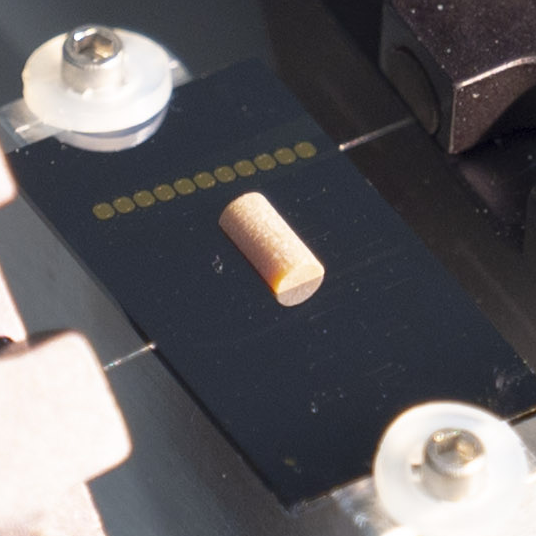Published/Posted: April 12, 2023
Authors: Lipkowitz, Steven T.
DOI: 10.13016/dspace/nq18-jskh
Abstract: Photonic microwave receivers take advantage of optical components and techniques to detect, transmit, and process microwave signals. These systems are able to take advantage of lowloss fiber-optic transmission in situations where coaxial cables would be prohibitively lossy, and are able to make use of integrated optical components that are much smaller and lighter than their microwave counterparts. Additionally, optical techniques can enable signal processing operations that are either difficult or impossible to perform using electrical methods. For these systems to work, an electrical-to-optical converter must be implemented to convert incoming microwave signals to the optical domain. A common method for this electrical-to-optical conversion is to make use of an electro-optic material, wherein the optical refractive index is modulated by the microwave electric field. These electro-optic modulators are commercially available in a variety of configurations with microwave bandwidths in the tens of gigahertz. Once the microwave signal is converted, other commercial optical components (filters, splitters, etc.) can be introduced to further process the signal, which is ultimately converted back to the electrical domain via photo-detection. At the system level, novel techniques for combining commercial components to perform advanced signal processing are rapidly emerging. At the device level, new chip-scale techniques for performing electro-optic modulation are also being developed. Some of these techniques involve using well known electro-optic materials in new ways, while others involve exploring lesser known materials and investigating their performance. In this thesis I will discuss experiments at both the system and device level. At the system level, I implemented a photonic down-converting I/Q mixer using commercial microwave and optical components. The system uses an electro-optic modulator that simultaneously converts both a microwave signal and local oscillator (LO) to the optical regime, where careful filtering and photo-detection of the optical signal produces two output electrical signals at an intermediate frequency that is the difference between the original LO and microwave frequencies. These two outputs are identical, except that they differ in phase by 90 degrees. This lower frequency output allows for easier digitization of the electrical signal, and the phase diversity of the outputs allows for further signal processing to be performed in the electrical domain. At the device level, I designed, fabricated, and characterized an on-chip metal-free doublyresonant electro-optic modulator using aluminum nitride (AlN) as the electro-optic material. Aluminum nitride is a wide band gap material with a significant electro-optic response, allowing for low-loss optical transmission over a large bandwidth. Additionally, AlN is significantly easier to work with than other electro-optic materials such as the popular lithium niobate. The doubly resonant device design discussed here takes advantage of the electric field buildup that occurs in resonant structures. In the microwave regime, a high-epsilon dielectric resonator antenna (DRA) is used to enhance the field strength of incoming microwave radiation as well as change the direction of the incident field. This DRA is placed atop an optical resonator fabricated in AlN on-chip, where the enhanced microwave near field of the DRA is allowed to interact with the built up optical field in the AlN resonator. This double resonance allows for a significant enhancement in the strength of the conversion from electrical to optical. This device also boasts an entirely metal-free composition, which allows for greater immunity against electromagnetic attack than conventional antenna structures.Citation:
S. T. Lipkowitz, "Electro-optic Microwave Receivers at the System and Device Level", PhD Electrical and Computer Engineering, University of Maryland (2023)
